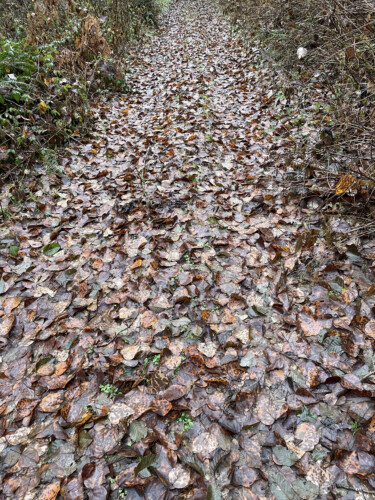 The front page of today’s New York Times newspaper includes an article about the impact of climate change on a remote village in Alaska. The article, by Erica Goode, is titled “Climate Change Pushes Towns in Alaska to Wrenching Choice,” and it begins with a dream:
The front page of today’s New York Times newspaper includes an article about the impact of climate change on a remote village in Alaska. The article, by Erica Goode, is titled “Climate Change Pushes Towns in Alaska to Wrenching Choice,” and it begins with a dream:
In the dream, a storm came and Betsy Bekoalok watched the river rise on one side of the village and the ocean on the other, the water swallowing up the brightly colored houses, the fishing boats and the four-wheelers, the school and the clinic.
She dived into the floodwaters, frantically searching for her son. Bodies drifted past her in the half-darkness. When she finally found the boy, he, too, was lifeless.
“I picked him up and brought him back from the ocean’s bottom,” Ms. Bekoalok remembered.
Ms. Bekoalok lives in Shaktoolik, north of Anchorage in a coastal region directly threatened by rising seas and worsening storms caused by climate change. The article goes on to describe the daunting challenges facing the residents of Shaktoolik as they contemplate a terrible choice between moving the town to a safer place or staying put and building stronger defenses against the ocean. The latter option would be folly, but the former choice is prohibitively expensive and would probably destroy the community just the same.
The dream shared by Ms. Bekoalok clearly expresses a reality-based anxiety about the dangers posed by climate change. Dreams of water are fairly common; people typically dream of water more than of any other element (fire, earth, air). But dreams of threatening water, such as floods or waves, are less common, and such dreams often include a heightened vividness and intensity that makes them unusually memorable. Combine that with a theme of danger to one’s child (a classic parental nightmare), and the result is a hyper-realistic simulation of a dire threat looming in the dreamer’s future waking life.
The broader resonance of the dream, and the reason why it’s a powerful way to start the story, derives from its roots in the evolved nature of the dreaming imagination. All humans have an innate propensity for nightmares that anticipate various threats to survival. Nightmares are most common during childhood, an especially vulnerable time of life, and they tend to diminish in adulthood. But whenever a serious danger arises (such as a work crisis, relationship break-up, illness, death, or a change in political regimes), frightening dreams often result. When we hear a nightmare like Ms. Bakoalok’s, we can immediately empathize with her concerns because we know from personal experience what it’s like to fear something so much it gives us bad dreams.
Nightmares usually do more than simply mirror a person’s waking life concerns. Most frightening dreams also include glimpses of possibility and alternative approaches to the threats and conflicts in waking life. The creative, problem-solving capacities of the human mind are enormous, and dreaming is one of the main venues for those capacities to express themselves, providing a remarkable source of novel insights, useful innovations, and out-of-the-box thinking.
As climate change continues to unfold, more and more people are likely to have nightmares like Ms. Bekoalok’s.
 Here are the recent posts I have written for Psychology Today, going back to the middle of last summer. Although each one is written as a stand-alone discussion of a special topic in dreaming, I now realize they also form a series of interrelated texts, like the chapters of a book I didn’t consciously know I was writing….
Here are the recent posts I have written for Psychology Today, going back to the middle of last summer. Although each one is written as a stand-alone discussion of a special topic in dreaming, I now realize they also form a series of interrelated texts, like the chapters of a book I didn’t consciously know I was writing….
 The front page of today’s
The front page of today’s